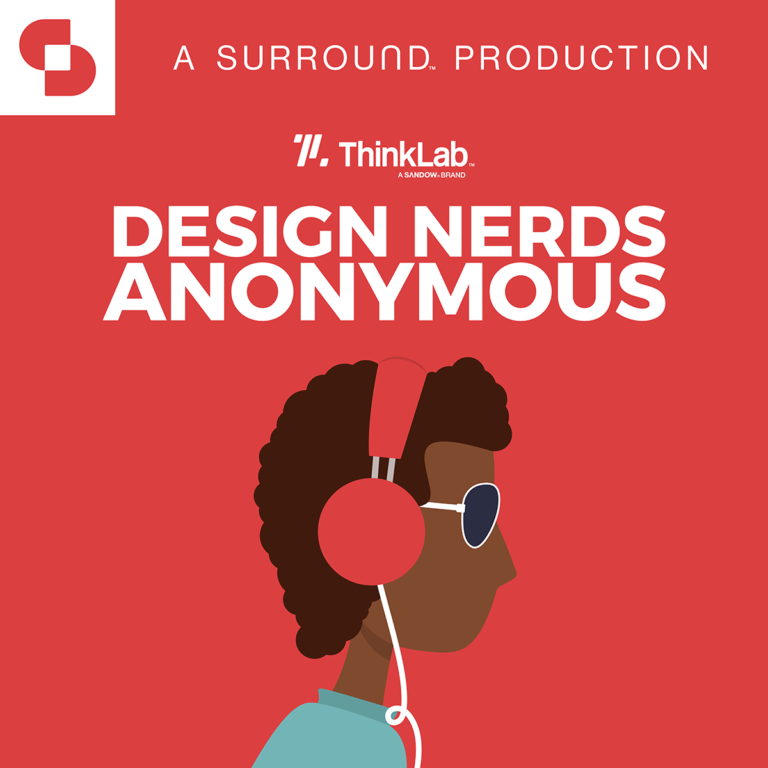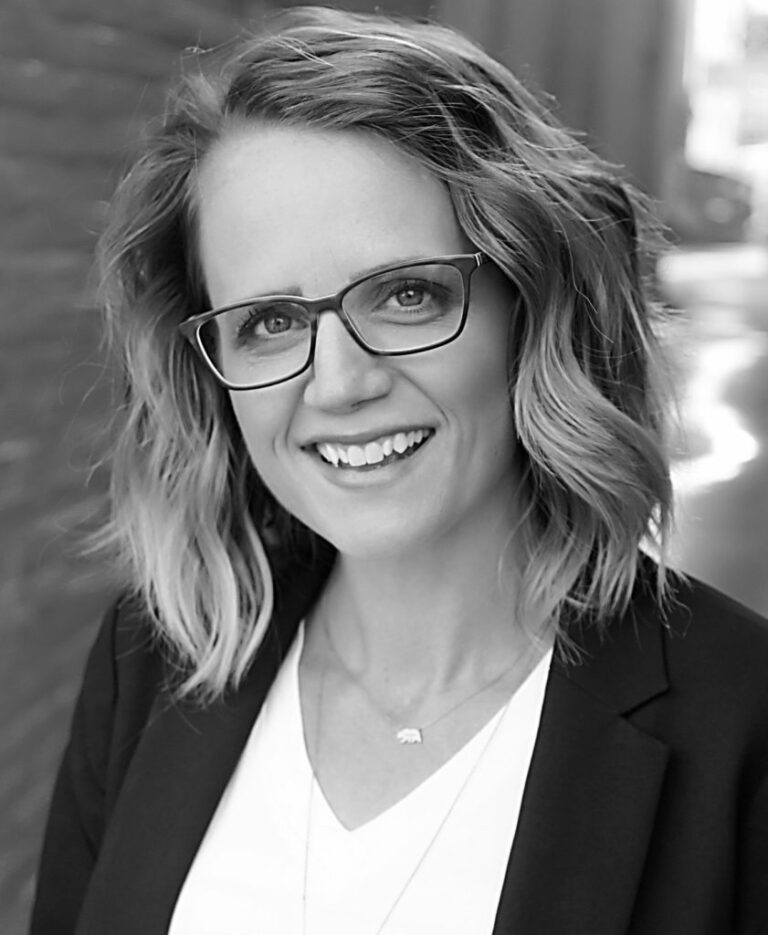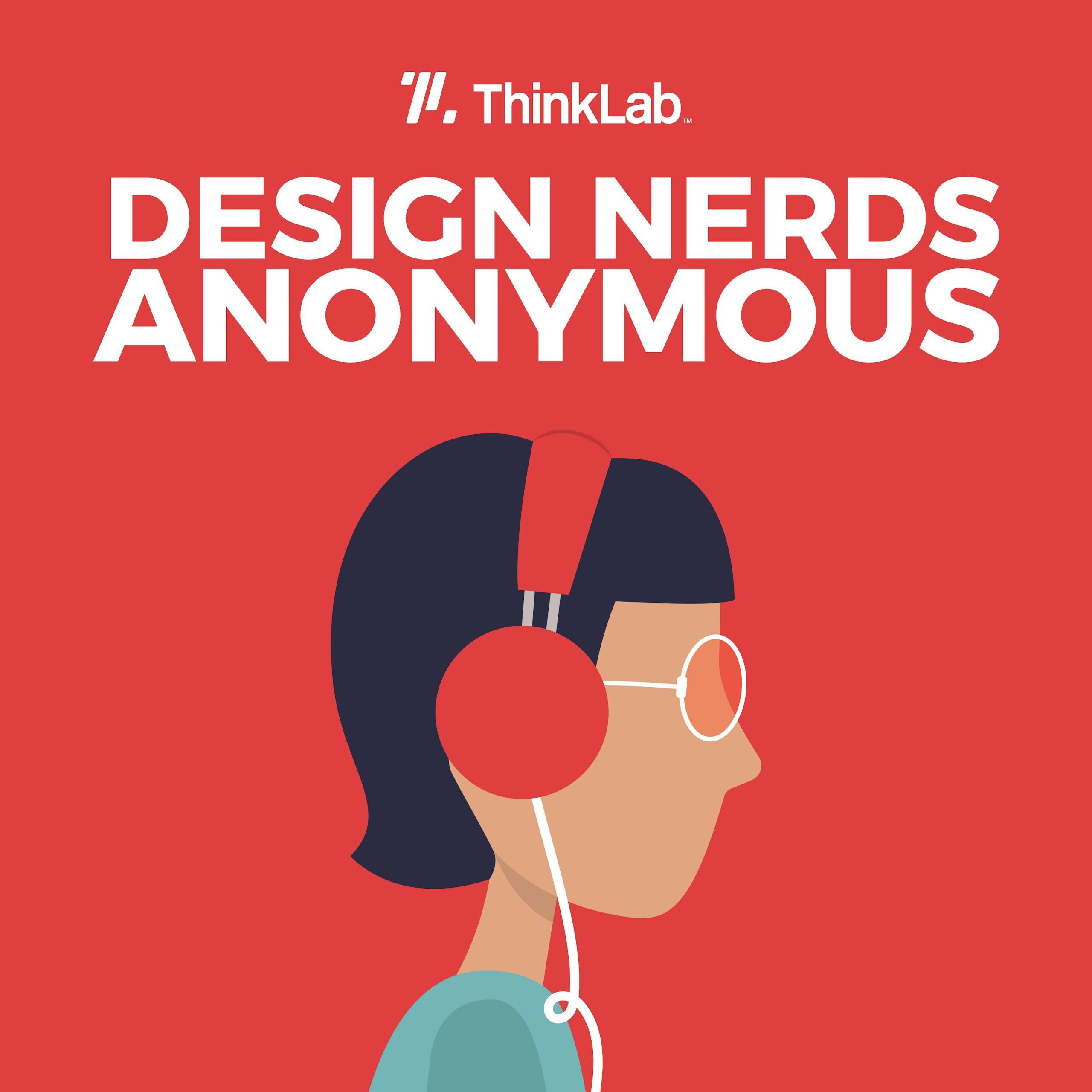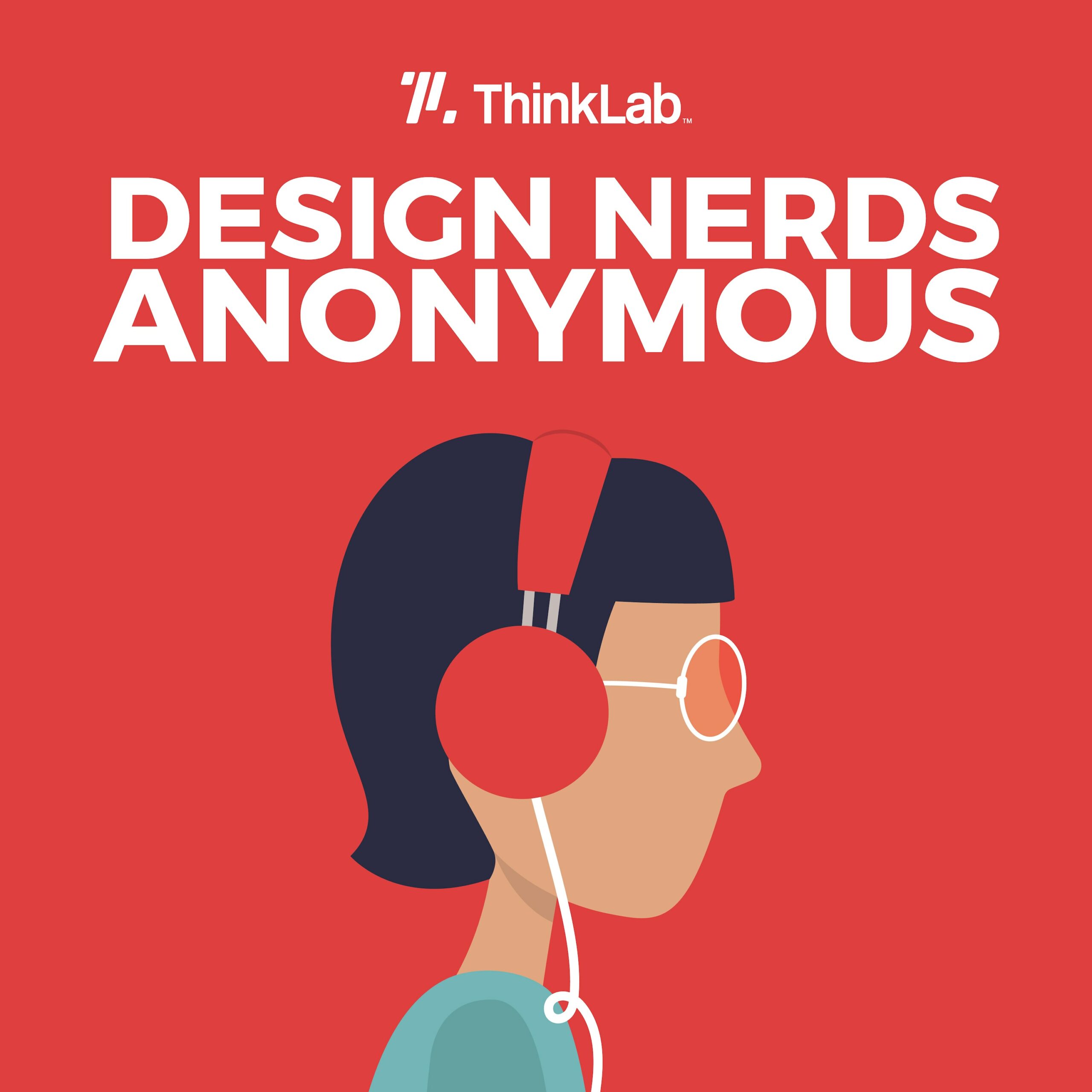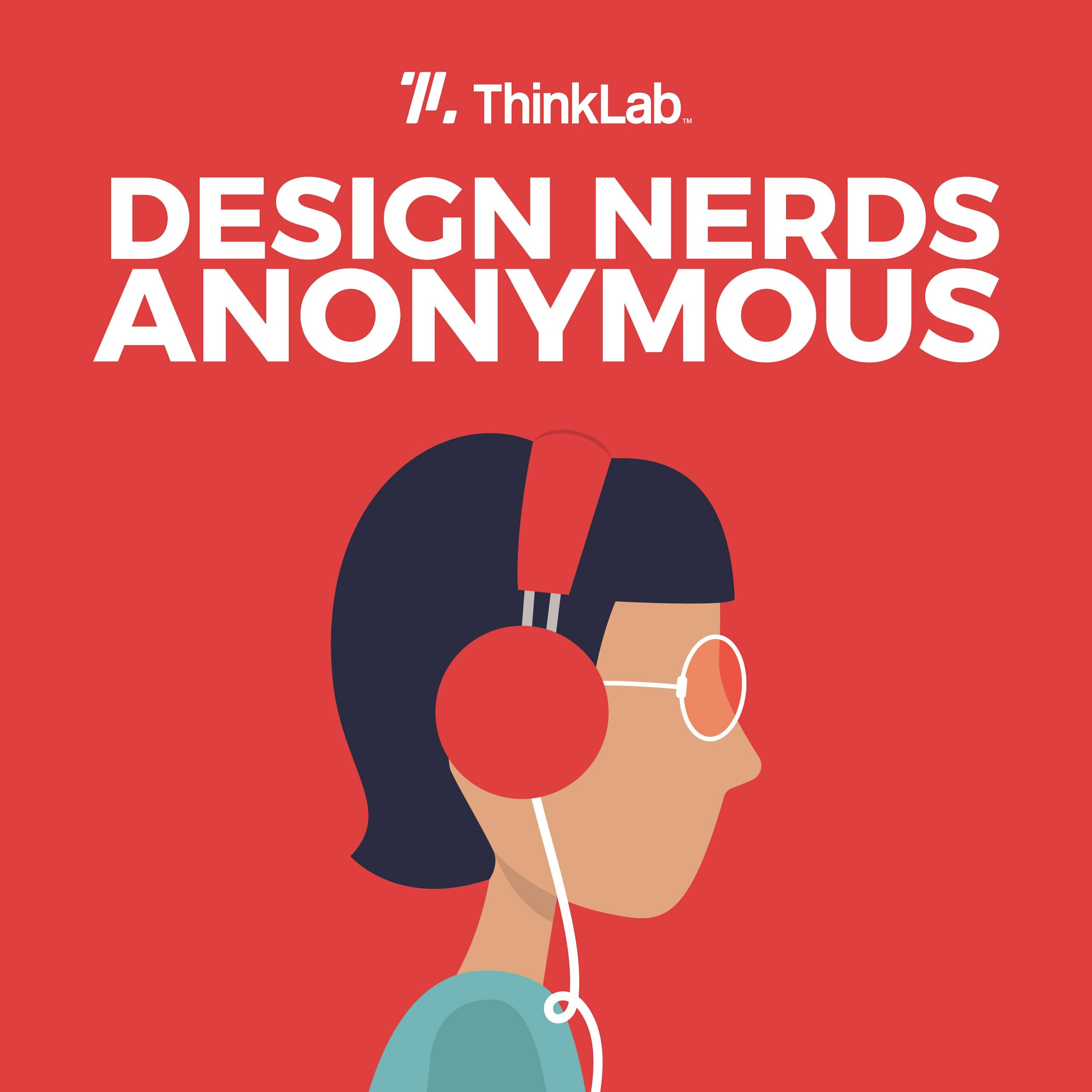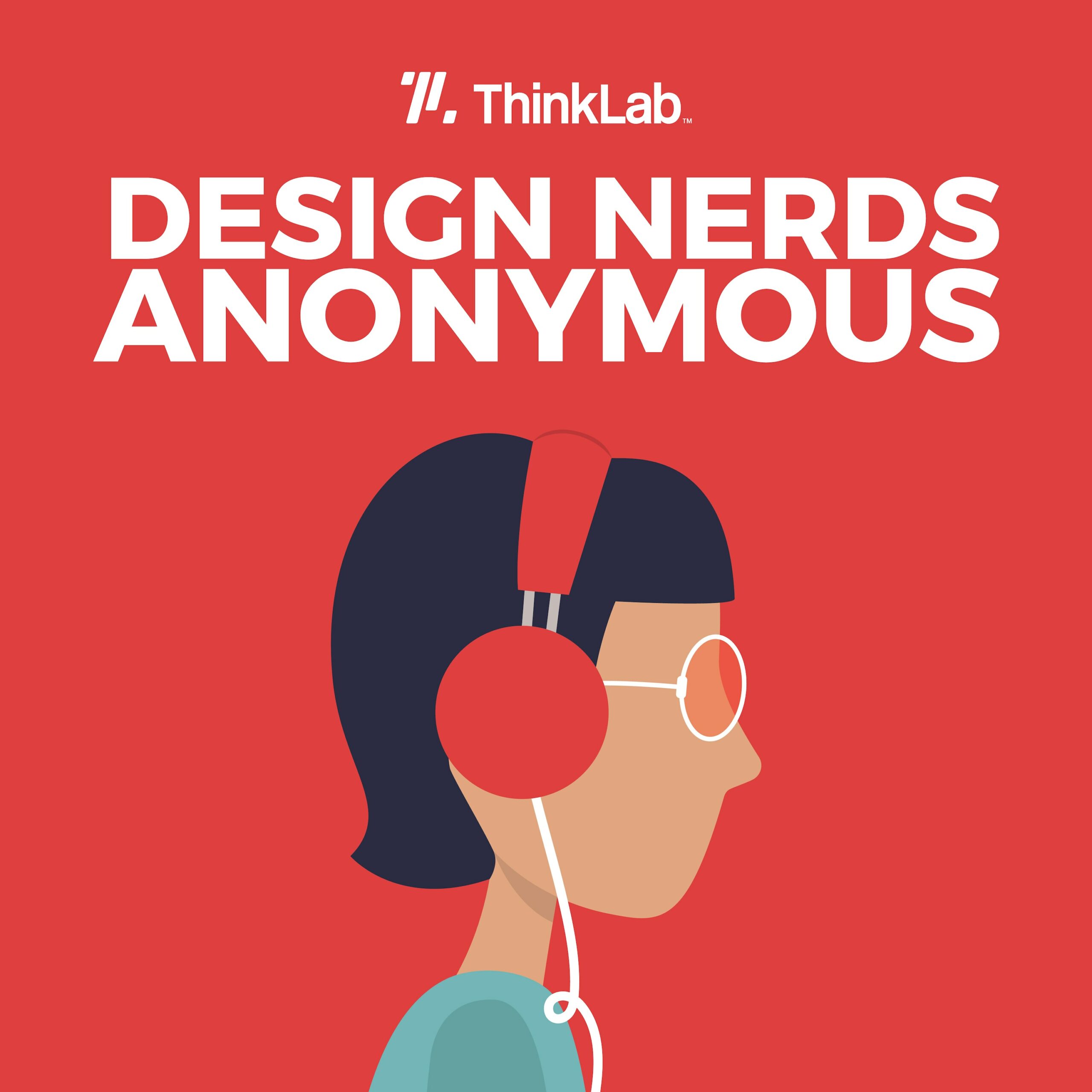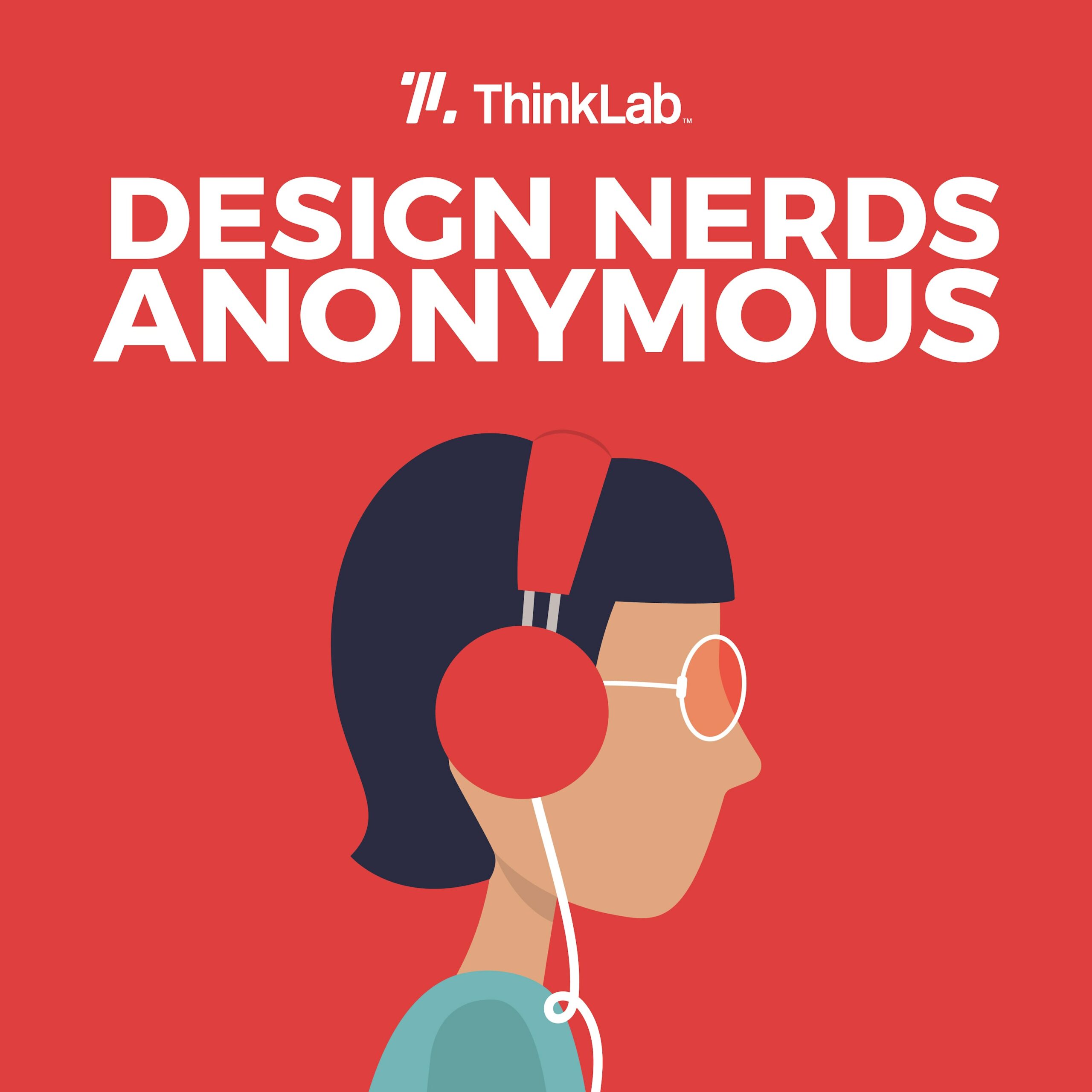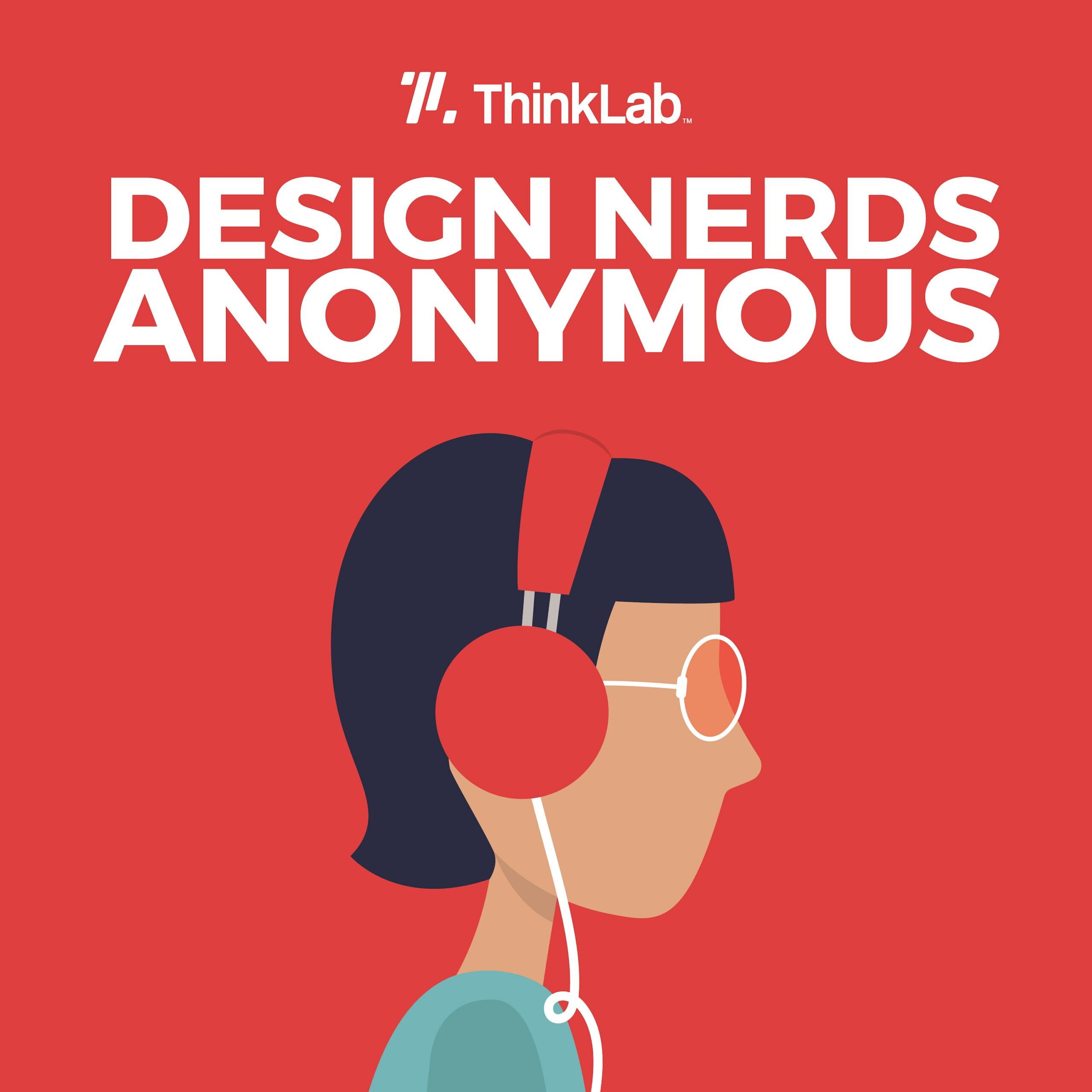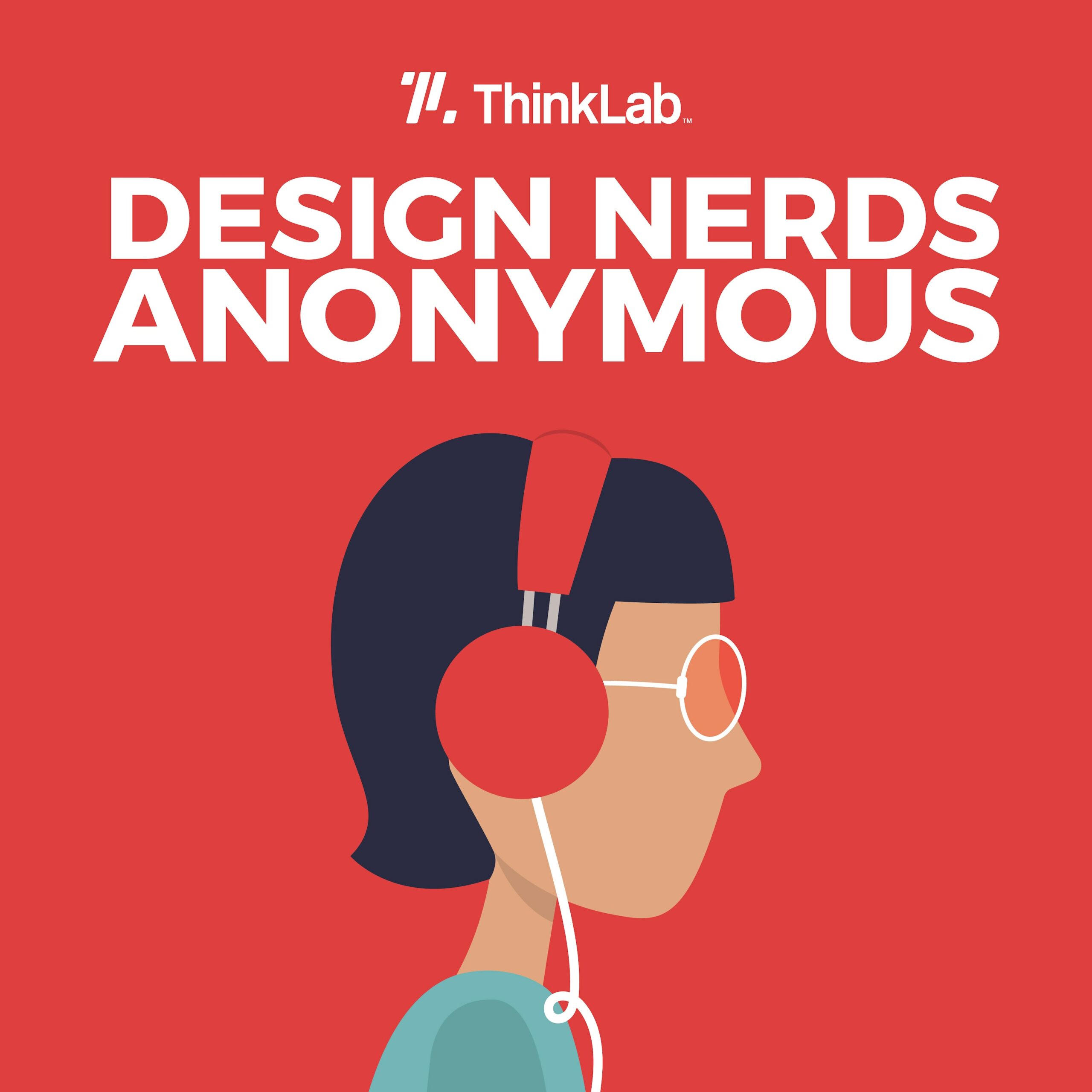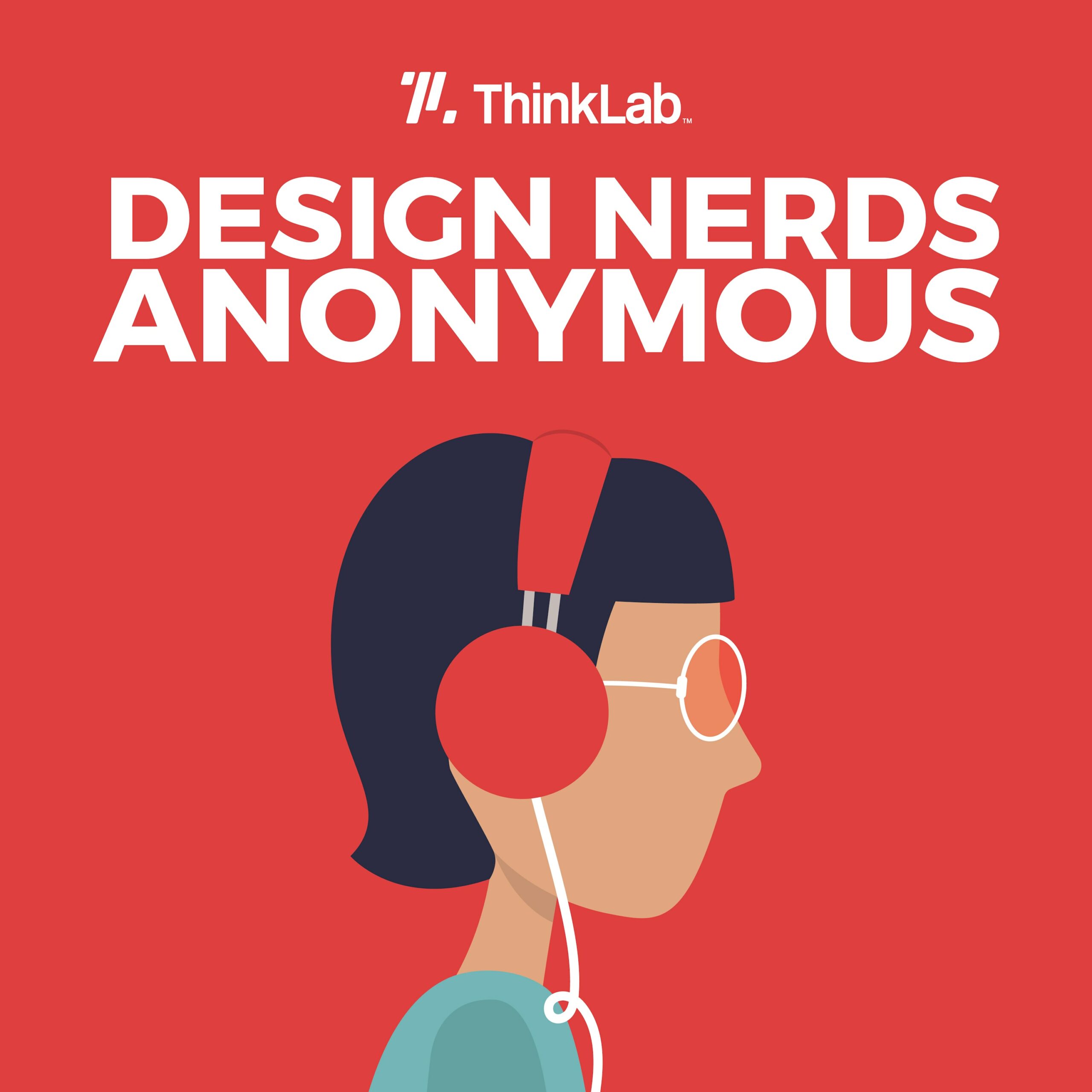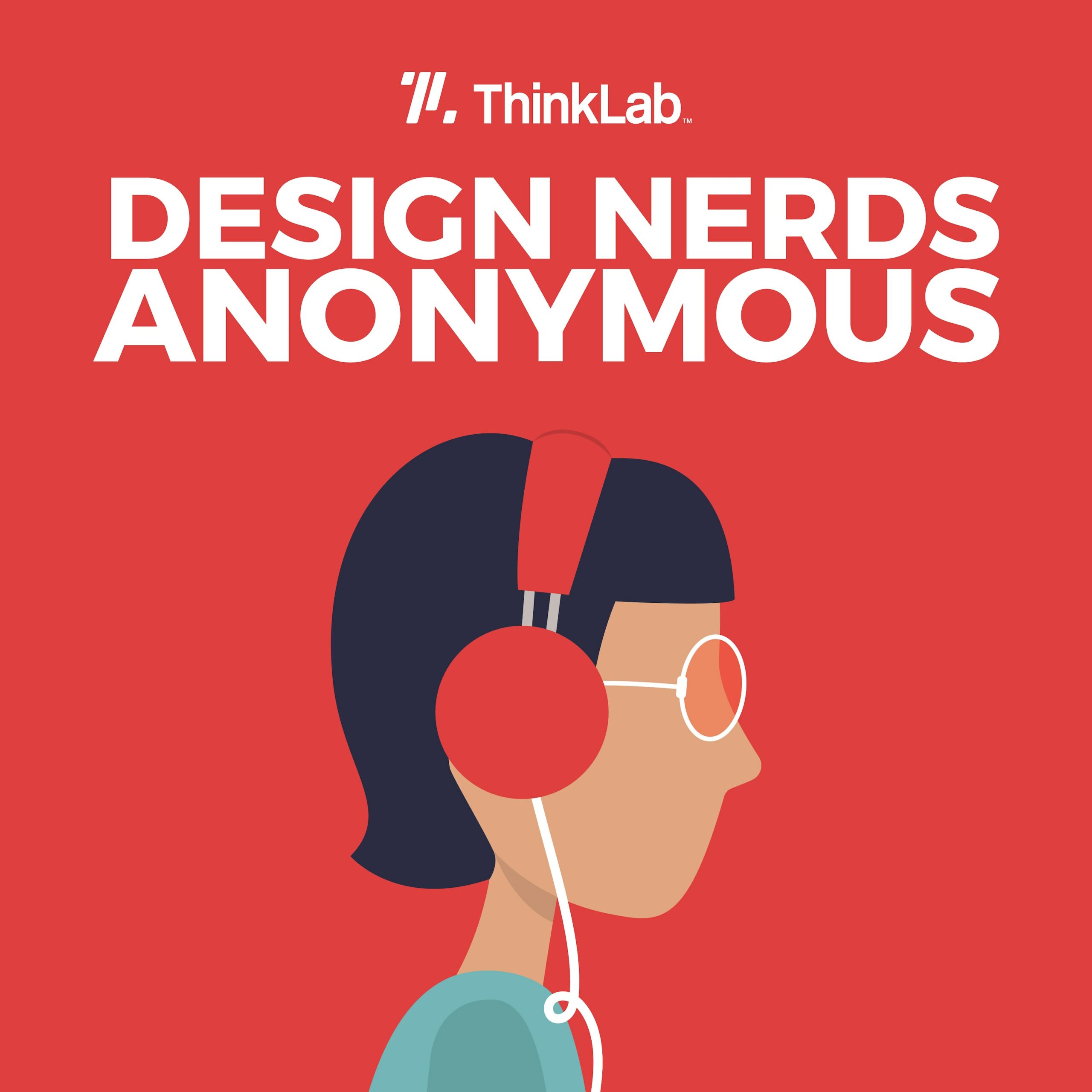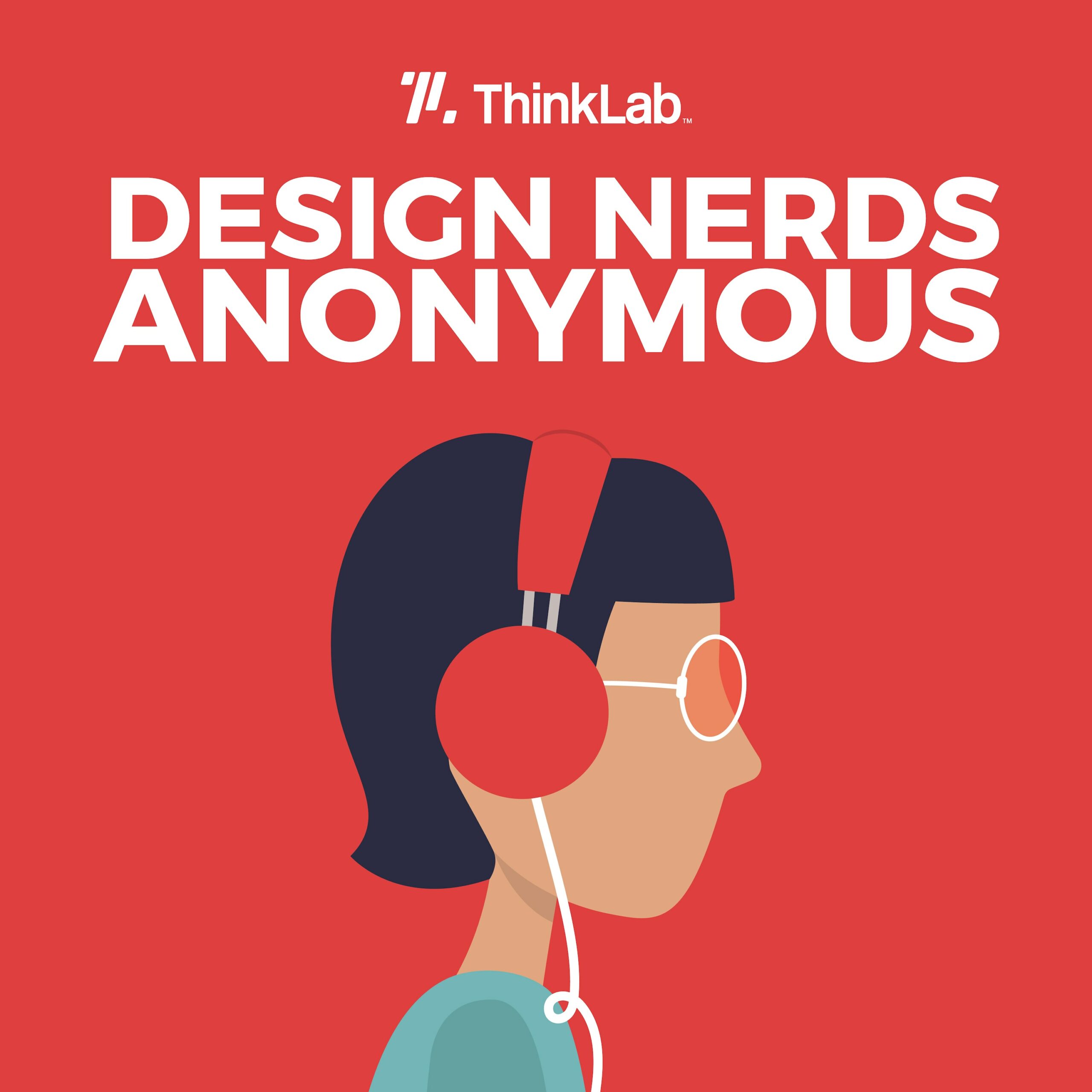In this episode, ThinkLab holds a roundtable discussion with Byron Morton, VP and co-head of leasing for THEMART in Chicago, and Amanda Darley, VP of marketing for Mannington Commercial. Both bring their perspectives on how brands, events, and even buildings can be leveraged to create and customize experiences — and why creating these experiences matters more than ever for our industry as we move into 2023.
In this episode:
[0:23] Amanda references a new blog post about ThinkLab’s Five Buyer Personas. You can read it in full here.
[6:28] Amanda explains Mannington Commercial’s Samplify program, which provided digital printed samples to showroom visitors.
[13:34] Byron discusses the ways that THEMART has expanded its digital presence.
[25:27] “With all of the social complexities that we have been facing, having some remote options has been a leveling of a playing field in some ways.”
In this roundtable, Byron Morton and Amanda Darley discuss the current state of affairs for the industry and what lies ahead. Byron describes the new programs and enhancements being put into place at THEMART to create experiences for clients in the building, such as expanding access to the members-only club and focusing on events. Amanda explains how Mannington Commercial has been finding new ways to interact digitally with specifiers, by creating content via the firm’s blog as well as through one-on-one videos and other online elements. These efforts are intended to position the brand as a knowledgeable resource for any questions.
Connect with our interviewees on LinkedIn:
This season of Design Nerds Anonymous is brought to you by Mannington Commercial, THEMART, and NeoCon, companies doing big things to move the design industry forward.
Download our leading-edge playbook: 5 Personas and 50 Ways to Design Their Phygital Journey.
Design Nerds Anonymous is a proud member of the SURROUND Podcast Network. Discover more shows from SURROUND at surroundpodcasts.com. This episode of Design Nerds Anonymous was produced and edited by SANDOW Design Group, with music from Blue Dot Sessions. Special thanks to the podcast production team: Hannah Viti, Wize Grazette, and Samantha Sager.
Amanda Schneider: So far, in season four of Design Nerds Anonymous, we’ve explored what a buyer persona is, how it can help customize the buyer’s journey today, and insights into ThinkLab’s five buyer personas for the design industry.
Now, if you want a more in-depth preview, check out our new blog post. But today, we’re going to be applying these insights as we discuss how brands, events, and even buildings can be leveraged to create and customize experiences — and why creating these experiences matters more than ever for our industry as we move into 2023.
Byron Morton: I am floored almost daily at the potential influence that our industry can have on people’s lives. You think about all of the important issues in the world, and our [00:01:00] community is really at the forefront of solving those.
Amanda Schneider: The voice you just heard was from Byron Morton, vice president and co-head of leasing for THEMART in Chicago.
Byron is joining Amanda Darley from Mannington Commercial. Both bring great perspective as to how we can enable the design community and the surrounding ecosystem to tackle pressing issues through design and better decision-making and, as a result, influence the world.
Welcome to season four of Design Nerds Anonymous, the podcast that sparks curiosity at the intersection of business and design. I’m your host, Amanda Schneider, founder and president at ThinkLab, the research division of SANDOW Design Group.
So, let’s dive in. Meet our panelists.
Byron: I’m Byron Morton, vice president and co-head of leasing for THEMART. I’m responsible for all of our showroom business here in Chicago, our showroom [00:02:00] business in New York City, and temporary sales for the seventh-floor exhibit hall during NeoCon.
I think a really common theme, frankly, since we did NeoCon in October 2021 is that more and more people are so excited to physically be together, and our last two additions have really shown that in terms of growth of audience. And we expect that to be even more in 2023. We’ve got a huge capital improvement program that a lot of people have heard about that will be completed by NeoCon 2023, and there’ll just be a ton of great new environments for our attendees and our tenants to gather.
Amanda Darley: I’m Amanda Darley. I lead marketing at Mannington Commercial. I have responsibilities for our showroom in Chicago and also all of our digital initiatives — everything we do when we launch products and everything that goes into marketing for a commercial flooring manufacturer.
I’m extremely excited about all the conversations and [00:03:00] transparency that I’m seeing across topics in our industry. There’s been so much that’s come out. Everybody has dealt with some kind of anomaly in the last few years. And so I feel like it’s put pressure on some things that needed some pressure on, and there’s been some change that’s maybe happened faster than it would have necessarily. It’s a really great time to be here.
Amanda Schneider: I feel like that transitions us to the next question really well. This season is all about customizing the client journey. If you’ve listened through everything that we’ve launched so far, it feels like one of the consistent pieces of advice has been about really leveraging digital — and everything we’ve learned from some of those disruptions you talked about, Amanda — to get to physical (back to Byron’s point about everyone really being happy to be face-to-face). And if we’ve learned one thing, it’s that that personal presence, that face-to-face, is maybe more important now than ever, even as digital climbs.
So, Amanda, I know we’ve gotten feedback from several who have forwarded us your blog about all the things that Mannington has been implementing as you have been on [00:04:00] this phygital journey with us. And we certainly see you as a leader in this space. Can you talk about some of the ways that you’re leveraging these digital tools to connect your human reps, maybe face-to-face, in physical space?
Amanda Darley: Yeah, we have been on this journey for a while, and it’s been exciting because, when you and I first started talking, I felt like we were kind of just starting out, and we’ve been able to go into deeper levels. We started really with a blog, because that was a way for us to get in front of people when everything was really locked down. And it was just answering questions that people were asking.
So, it was really all about the idea that if somebody’s asking it, we want to be the trusted resource that’s answering it. And then guide people who are reading and learning about our brand or our industry to reps, so they can connect and make that relationship more personal. So we started with that.
And also, with all of our events, and with NeoCon in June, we’ve been interacting via digital components. So, for example, if somebody isn’t able to come to NeoCon, we have an online component. [Or] if they’re there and they want to connect with their local rep, but, you know, [00:05:00] all of our reps don’t really actually fit in our showroom. We are very judicious about who’s coming in and making sure that we have the right people at the right time. So, we have all kinds of online components as well, with QR codes, videos. The blog has been a huge piece. We’ve been spending a lot of time with our reps helping them learn; we did a lot of one-to-one videos.
And, when we started this whole process, it was, like, everybody was locked down, but we all were thinking we’re going to go back to normal. And then we realized, “Normal? That isn’t going to happen. There’s a new normal.” So, what does that look like? Some people maybe were a little bit hesitant. There were even designers who thought, “I’ll just ride this out.” Now they’re having to interact more in a digital way, and everybody’s found their speed. And so, we’ve been providing a lot of training for our reps to make sure that they’re connecting in the right ways.
And it’s been so cool to see, whether it’s a rep discovering LinkedIn in a new way and interacting with some designers they haven’t been able to connect with, or doing one-to-one video, or writing their own LinkedIn posts that are like [00:06:00] blogs, or linking to ours and then it ends up being a lead. There’s just been a lot of ways.
Amanda Schneider: You mentioned QR codes, but how are you using them?
Amanda Darley: We have QR codes on all of our physical showrooms to make sure that if somebody wants more information, it’s right there. Because there’s only so much you can put on a wall or a panel, and there’s so many things that we have available. So we’ve had QR codes that link over to our visualizer, if they want to be able to see more of the products in room scenes.
Also at NeoCon, we launched Samplify, where we were having digital printed samples of everything that was in our showroom. So our customers, as they walked through, were able to interact, ask for the samples, and then it would alert our local reps if those customers wanted to learn more or see them in person. Also, it’s a way to feature case studies or videos, other things that are digital. And the great thing about it is that you can have it on a landing page so people who aren’t at your event or your showroom are able to find it, but you can also have it in your showroom.
Amanda Schneider: So, [00:07:00] Byron, I’m going to come to you next and hopefully build on this. Last season you spoke about some updates to THEMART that you’re making to obviously make the building more attractive in this new phygital world: as a physical space to gather, as well as the Hub, which was the digital connection point for NeoCon. So, what additional enhancements or programs or tools are you putting in place to serve your showroom clients and create experiences for their clients in this building?
Byron: As we’ve talked about, I mean, THEMART 2.0 is going to introduce this incredible new conference center on the second floor of the building that will provide just amazing, neutral places for manufacturers and dealers and reps to meet with their customers, and really bring a lot of energy to the building — as well as our new River Drive park, which will just be really our front yard to the city.
Clearly our focus is on the physical. In the last couple years, we had to learn how to maximize our brand and our [00:08:00] tenants’ brands digitally. And a big part of that was the NeoCon Hub, which gives our showrooms the ability to give a little deeper dive into their showroom and into their products through the NeoCon website and through our mobile environment.
But we’re really focused on the physical because that is our business, and we’re focused on the physical not only during NeoCon, but year-round. And we’re able to offer so many amenities to the community, and we are adding to that in 2023. One of those is our members-only club, Design HQ, which has historically only been open to the residential designers that shop the building year-round; it will be open to commercial A&D. As well as our VIP parking, on the North Drive, which is truly rock star parking that will be offered to members of the A&D community, both locally and those [00:09:00] that come in to specify projects. With registration, you can literally come in and park on the North Drive and walk right into the building. And I challenge anybody to find that kind of convenience in any metro area, frankly, so we’re really excited about that.
And then the other thing that we’re focusing on more and more is year-round events, to give our showrooms the opportunity to activate their spaces year-round. We’ve partnered with several of our media partners, our industry associations, as well as our tenants themselves. And, in October, for example, we frankly have had more than one event a week. And our goal is to provide at least one, if not more, events per month next year, and we’ve got a dedicated team working on that as well.
So, lots of exciting new things.
Amanda Schneider: I want to blend these stories together, so let’s dive a little bit deeper into, maybe, some of these phygital tools. And Amanda, I know Shannon spoke a little bit in the rep roundtable episode [00:10:00] about the blogs that you’ve been doing and how you’re using those to connect with clients in new ways.
I feel like that’s always a win when a sales rep gets excited about something that’s happening in marketing as a way to connect with these clients when she’s struggling that she wasn’t using before.
Amanda Darley: Yes. Something that’s really important at Mannington, that Mannington Commercial is known for, is that we have great design, high-performing products, and that we are a partner for our customers and also bring integrity to everything that we do. And one of the ways we’ve really been working to do that is creating content that’s answering some of those questions where there just hasn’t been a lot of transparency around things. How can customers compare or find out information, understand what’s going into a product, or even just have a different perspective?
For example, in the design hackathon, a lot of things kind of came out, like, universally, when designers are ordering samples, they don’t want to be inundated with questions from sales reps. [00:11:00] But then there’s this [other] perspective: This is something that one of our reps posted, and it garnered conversation, because it was just bringing insight to the [idea] that if they’re asking questions, maybe it’s because they want to help you get that information.
So when we see those conversations, that’s an area for us to jump in and create a blog post around it. So, we have so much content around “What’s the best basketball floor?” or “How do you clean and maintain this?” or “How was this created, and what do you need to look for?” So, we have e-books, and it’s amazing how many downloads that we’re getting on all of our content. And it’s great because we have a lot of categories at Mannington Commercial, and we cover a lot of segments. So we’ve been able to really go on deep dives into healthcare flooring, which is a very different kind of process of buying and thinking than with maybe something that was going to go into a workplace.
So, there’s the technical knowledge that you need. Just every single [00:12:00] category has so many needs. There are so many things to consider around furniture or fabrics or finishes. And so to be able to go deeply into that when a buyer needs it, for them to be able to find that information and then connect with a rep, has been really meaningful, because we know that face-to-face time with designers has gotten so much more precious over the last few years.
So, if there’s anything that we can do to get that information into their hands a little bit sooner in that process — whether they’re the kind of designer that just picks up the phone and calls, or they’re the designer that’s Googling first and making sure that they have all the information — we want to show up [for them].
And it’s a resource for our reps, because if somebody sends them a question, they aren’t necessarily an expert in every single category to that level. But guess what? They know who those people are, and there’s content that they can send, and then there’s calls to action if there’s questions on the side of the designers. So it’s just been this great [resource].
So, when I spoke about transparency earlier, that’s one [example], just the transparency around information. [00:13:00] There is a lot to know in flooring, and we can nerd out because we love our industry. But we also love our category, really, and know so much about it, and we want to share that. So that’s an area that’s been really great, and we’re going to continue to grow in that, because we’re seeing a need to really educate.
Amanda Schneider: And I feel like that kind of answers some of the challenges that we heard from that rep roundtable this season, where a lot of these different folks are struggling in different ways to connect them and, again, get that digital to connect to physical.
Byron, I see you taking notes over there. Do you have something to add to this?
Byron: I think for a real estate company and a trade show producer, it always feels a little awkward for us to talk about digital. But digital is this incredible tool for us to extend the exposure of the NeoCon brand and THEMART brand — as well as all the companies that are here — to a wider audience and to do that year-round.
In the last couple years, as I mentioned before, we’ve really [00:14:00] expanded a lot of our digital efforts. We’ve got quite a few vlogs on the NeoCon website, things [ranging] from product spotlights to on-the-street discussions. We do a lot of social media takeovers, and as a result, our social media engagement and growth has just really grown tremendously over the last year and a half. We’ve had about a 10 percent growth in our overall audience; on social, we’ve got about 80,000 followers. And our engagement, which I think is even more important than the growth aspect, has increased about the same as well.
To any type of the personas in the buying process, physical really is important. It’s just a question of having the right tools at the right time in the process. And companies like Mannington have done just these amazing things in the digital environment to provide in-depth information about their products, but there are things in the physical world that you [00:15:00] just can’t do digitally. In the floor-covering category, for example, to see a product at scale and under realistic lighting, with in-person interaction (whether it’s on a trade show floor or in a showroom), at the right time in the process is just key, still.
Amanda Schneider: Well, and I want to change tack here a little bit, because I think there’s a real opportunity industrywide for us to make some really positive change in the world. When I look at our Interior Design Giants of Design numbers, the two largest sectors historically were corporate and hospitality. We saw during the pandemic those were the two hardest-hit.
And as we look at the uncertainty in the world, people are ready to move forward. I know when they come to our brands or they come to shows like NeoCon, often they have questions like “What is the future of work?” Many of our Trendspotters from NeoCon this year called it the era of indecision, combined with supply chain issues that seem to be continuing to plague us. The same projects are simply taking longer. There’s more decision-makers. Our industry is getting more [00:16:00] complex. But what will 2023 bring?
Where are the opportunities for our industry to rise up, bring those answers, bring the conversations to the table to help push not just our industry, but really push the world forward? And how should we be leading the way?
Byron: I am floored almost daily at the potential influence that our industry can have on people’s lives. You think about all of the important issues in the world, and our community is really at the forefront of solving those and really doing very meaningful work on everything from diversity, equity, and inclusion, to sustainability, to wellness.
All of those really key things are at the forefront of what we do. And, between digital tools that our manufacturers, as well as ourselves, are using and the physical spaces that we create, we really think that we can play an integral part in moving all those very important issues forward. [00:17:00]
Amanda Darley: I was, literally, this morning reading in Global X that buildings are responsible for up to 37 percent of energy-related carbon emissions globally. And by 2050, nearly 70 percent of the world’s population is projected to live in urban areas.
And so going back to what we can do, like, long-term for everyone, to lift the boat for everyone, to Byron’s point, [sustainability] is a huge initiative for Mannington Commercial moving forward, because it really ties in with all of our core values, and it’s something that’s so important to us. And having real, meaningful conversations about what is working, what isn’t working. Because there’s so much opportunity for all of us, and we all have a big vested interest in it.
Amanda Schneider: And Amanda, I’m super excited for you guys to hear our episode on the sustainability-first persona. Because, as it starts out, we pulled a line that’s from the [00:18:00] trailer. It’s actually the leading line in the trailer where it says, “Designers have never once said that they have extra time.” So I hear things like that. I hear things like Shannon in our rep roundtable interview who said, “I want to help these designers make better decisions, but I only have so many Wednesdays in a year.”
Our whole industry is struggling with this connection. And I think that’s where even a real estate company can get excited about some of these digital tools and the efficiency that they provide to make better decisions, be it a sustainability decision, be it an application decision. Because no one has extra time. So, how do we connect all these pieces of decision-making, simplify that decision-making process, and even connect those insights?
And Byron, I’m going to connect this back to what you said about even your social media following growing, and I think that oftentimes today we’re buying people’s attention, right?
That’s what’s happening in this digital world. And the fact that you have people looking to your company and this industry, and coming to you to find those answers, I think really underlines the point that you made that we’ve got a big [00:19:00] chance to make a difference in some of these issues that the world is facing.
So, as we think about our industry and the opportunities that are staring us in the face, looking forward to 2023, are there opportunities for us to really push ourselves, our peers, to think bigger, think differently, in ways we could make a bigger impact?
Amanda Darley: I believe strongly that there is opportunity for us to all, in different ways, look ourselves in the mirror, whether it’s manufacturers — And I know everyone’s doing it, and that’s what’s exciting. People are looking in the mirror about what their ingredients are, where they’re sourcing them from. Because there’s been a lot around human rights, about when you manufacture it offshore, what that looks like, how you’re treating your people here, what ingredients you’re using and also looking at spaces and longevity of products and how often you’re turning things [for example] having a performing product that goes down longer means potentially you are not taking that out, putting it to [00:20:00] landfill or getting it recycled, which is a huge area that we all need to look at because the design industry and building materials are massive and have a huge impact on the whole environment that we live in.
And so, I think every part has a place to look at that, whether it’s, OK, this might not be something that’s only going to last for two years, I need to specify it and it’s going to be down for 10 years. What does that look like? And I know that has implications. But again, going back to what the long-term best is for everyone, I think there’s a lot of opportunities.
Byron: I’ve always thought that design community is very “people first.” And I think that as we move into 2023 and as we come back into physical environments more and more, that, as long as we keep that [00:21:00] people-first mentality, whether that centers around an industry initiative or a buzzword (which, you know me, I’m not a big fan of), as long as the design community and the real estate community and the events world continues to focus on people first — whether that’s the people that make the product, use the product, or (hopefully not) dispose of the product — that’s where we need to be.
We have really been working to expand the scope of our programming beyond design rock stars, for example, and really trying to bring in thought leaders from other industries, from other worlds, to talk about human interaction and wellness and all those things that, 20 years ago, didn’t come up in the subject of work.
Amanda Schneider: Is there anything I have not asked that you want to cover?
Amanda Darley: We had launched [00:22:00] an internal inventory lookup tool at the beginning of this whole thing and quickly started realizing the need [for more]. Because before it was like, “Oh, B2B, we don’t need this.” No, we do need it; everyone expects it. And so, we have been working on just a way for our customers to be able to see what’s happening with their order and where things are at. And it’s in process. We’ve gotten it out there, and we’re working on the user experience as well. But we also have an inventory lookup, and that’s the top thing that people are checking out on our website. And I would say it’s varied. It’s an opportunity that we’re working on to elevate it even more, because more people need to know it’s available.
Speaking to the supply chain issues, every time one thing gets fixed, something else that you’re not expecting goes a little sideways. So we have coordination and alternates so that, you know, if there’s an issue or hiccup, you’re able to see other things that are available, other options, more easily without having to always go to a rep or pick up the phone and call customer service (because, again, everything’s compressed and [00:23:00] constrained). So we are really excited about those [tools].
But going back to that transparency that’s been built — where we are able to speak to some of the issues that have been happening, how we can find ways and work-arounds — I think a lot of things, not necessarily deliberately, were just hidden behind a veil, and now the veil’s gone. Because you have to know what is happening with a raw material, [for example,] because it has such a huge impact. So, I think there’s a lot of opportunity for education.
I’m really excited Mannington Commercial has really started investing more in interior designers who are in training to help make sure that they’re getting some of that education that they need about materials, as they come into the industry, and also supporting educators that are working on that.
There’s just so many opportunities.
Amanda Schneider: An inventory lookup thing might not feel like the sexiest thing to talk about, but the more we can bring in that transparency and simplicity — I think back to your point on sustainability, the more it even enables those designers to make better decisions, [00:24:00] even on a sustainability front, if we’re simplifying these things — [the better].
So, Byron, I’m going to come to you next. Is there anything I have not asked that you want to cover?
Byron: The commercial real estate world is taking a lead in getting people back to the office.
From a commercial real estate perspective, amenities have become such an important feature of multiuse buildings and multi-tenant buildings, and tenants are looking to their landlords to provide engaging, exciting amenities to help lure their employees back to the office.
And, I see that as one of the most important things that the real estate community can do is to really figure out engaging ways for their tenants’ employees to engage physically.
Amanda Darley: With Byron and the return to work, I think, [00:25:00] [on the one hand,] interactions are so absolutely meaningful. I just was at an in-person meeting last week that, again, was just amazing. And I was there with people from the firm that were from Denver, New York, Boston, Chattanooga, multiple cities, New Jersey, Philadelphia. There was a group of people coming together, and we all worked together, and that in-person interaction was really great.
But I do think that with all of the social complexities that we have been facing over the last few years, having some remote options has been a leveling of the playing field in some ways. We saw so many women have to leave the workforce. In December of 2020, it was, like, massive. You’re the numbers lady, Amanda, but I want to say it was like 80 percent or 85 percent of people that lost their jobs or left the workforce were women. And the majority were women of color, minorities. It was just really hard, and it had a big [00:26:00] impact on our culture. And so, when there is some availability for remote, it makes a huge difference and keeps people engaged and in the workforce that maybe wouldn’t be able to be [otherwise].
I do also want to say I think in-person is so meaningful. I was thrilled to be at NeoCon in person, seeing customers we hadn’t seen in person in a long time. But I think there’s also a balance, and it’s a good conversation to have. It just goes to show that everything isn’t fit for every person.
And again, going back, Byron, to your point that our industry is really people first, I think some things have bubbled up that maybe weren’t there before, to find other meaningful ways to connect.
Amanda Schneider: And we hope we don’t lose those as the world reopens.
Byron: I’ll add to that, Amanda. I think that one of the things that has really been a game-changer from the hybrid workplace evolving is video calls to me are the old conference calls. And the ability to bring [00:27:00] people who aren’t in the room into the room and to see facial expressions and body language and all those things that used to require 12 hours of travel, or that used to require 3 or 4 hours of travel, we can do that almost spontaneously [now], and I don’t want to lose that either, to be honest.
Amanda Darley: We have been having a lot more interactions and more events and getting in front of customers with a lot of great content we’ve developed with you guys, for example, and that’s been really helpful. But then also extending it and being able to have podcast CEUs has been a really great way to, again, bridge the gap, because not everybody’s going to be in person doing a CEU.
Amanda Schneider: And I feel like that’s a great example of this phygital world, right? Because [The Learning Objective] is designed to be CEUs on the go. People can listen to it, and it also becomes a movie trailer to get you to in person, right? So, as we talk about the blending of these worlds, if you’re so interested in this content, then invite us in, and Shannon White will come to your showroom or your firm and deliver it to you in person in the [00:28:00] full movie version of it.
Amanda Darley: It isn’t the same as just saying, “Hey, I’m going to bring you a gourmet coffee and a really great donut, and you’re going to come and see me.” That’s changed. And anybody that has any time, I would love to be able to just have lunch with you, but I only have so many lunches in the city, like you said, so let’s make it count.
Byron: And I think the key to making it count is the experience, right? That experience, whether it’s a digital experience or physical experience, it’s the experience [that matters]. It’s about curating something that people will remember and that will have an impact on them. And I think we’re all in a really good place to do that.
Come to NeoCon in June, and make sure that you put THEMART on your itinerary year-round, because you will not find a larger concentration of resources anywhere really in the world.
Amanda Schneider: I want to personally thank our season four sponsors: Mannington Commercial, THEMART, [00:29:00] and NeoCon.
Design Nerds Anonymous is a proud member of the SURROUND Podcast Network. Discover more shows from SURROUND at surroundpodcasts.com. This episode of Design Nerds Anonymous was produced and edited by SANDOW Design Group. Special thanks to the podcast production team: Hannah Viti, Wize Grazette, and Samantha Sager.
I want to shout out to one of our listeners, LFR777, who left a review saying: “This should be required listening for brands in the interiors industry. I particularly appreciate the input from outside design.” And we appreciate you.
So, if you like what you’re hearing, we have a small favor to ask. Before you close out your app, please tap to leave us a quick rating or review on Apple or Spotify. It truly helps us better serve the design community.

